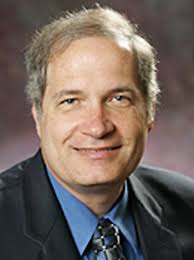The U.S. National Institutes of Health (NIH) has a new biosketch format where they ask you to summarize “up to five of your most significant contributions to science.” Here’s a first draft of my research contributions to Evidence Based Medicine.
At Children’s Mercy Hospital, I developed an interest in Evidence Based Medicine. I had attended many journal clubs and started wondering what level of evidence does it take to get doctors or other health care professionals to change their clinical practice. In my experience, doctors tended to be hypercritical of the research presented at journal clubs. It’s far too easy to nitpick and find a minor issue, but this does not necessarily invalidate the findings of the study.
I reviewed the existing literature, especially the Users Guides published in the early 1990s in JAMA to better understand critical appraisal of the medical literature. I had the opportunity to present some of my own thoughts on critical appraisal in a series of articles for the Journal of Andrology. I also partnered with doctors to write a couple of editorials that addressed controversies in critical appraisal, especially the importance of defining a clinically important difference. The material from these articles and editorials plus additional content from my website formed the basis of a book published in 2006 by Oxford University Press.
My experience with Evidence Based Medicine has taught me the importance of a thoughtful approach to research design issues like blinding and concealed allocation so that the resulting research publications will be considered more persuasive during the critical appraisal step of Evidence Based Medicine.
Simon SD. Statistical Evidence in Medical Trials. What Do the Data Really Tell Us? Oxford UK: Oxford University Press; 2006.
Dinakar C, Simon S. The link between the Hippocratic Oath and evidence-based medicine. Ann Allergy Asthma Immunol. 2006 Apr;96(4):511-3.
Portnoy JM, Simon SD. Is 3-mm less drowsiness important?. Ann Allergy Asthma Immunol. 2003 Oct;91(4):324-5.
Simon SD. Is the randomized clinical trial the gold standard of research?. J Androl. 2001 Nov-Dec;22(6):938-43.
Simon SD. Understanding the odds ratio and the relative risk. J Androl. 2001 Jul-Aug;22(4):533-6.
Simon SD. Interpreting positive studies. J Androl. 2001 May-Jun;22(3):358-9.
Simon SD. Interpreting negative studies. J Androl. 2001 Jan-Feb;22(1):13-6.
Here are pictures of the two doctors that I co-wrote EBM editorials with, Jay Portnoy and Chitra Dinakar.


You can find an earlier version of this page on my blog.